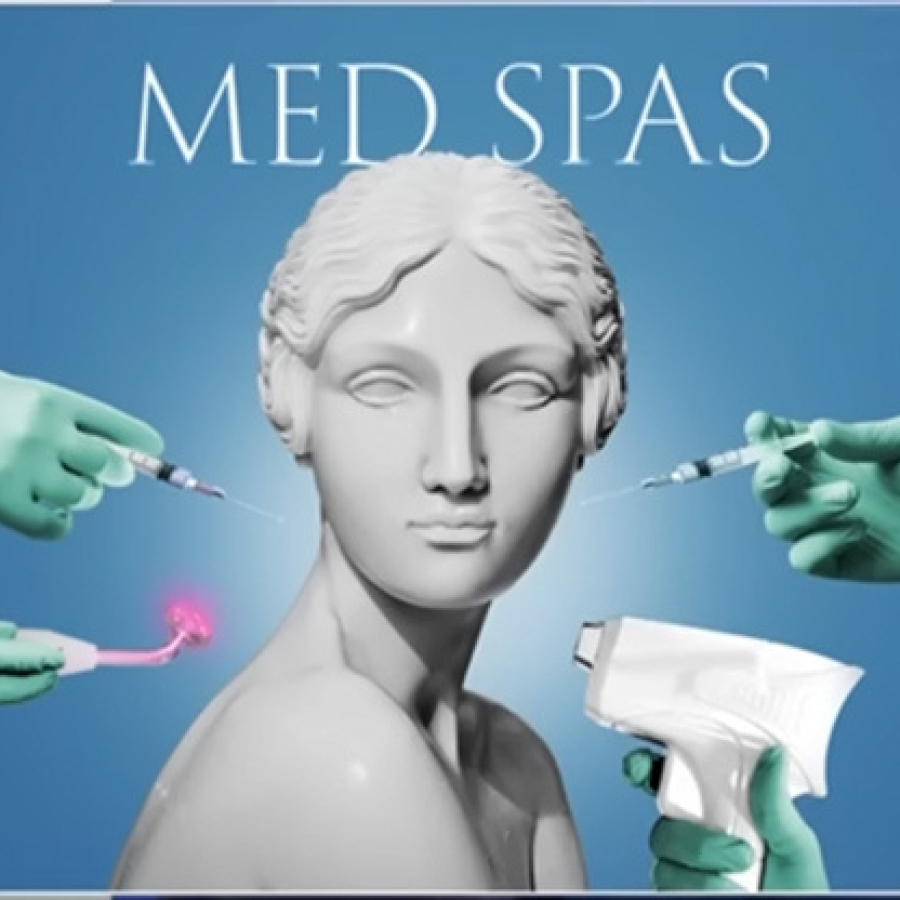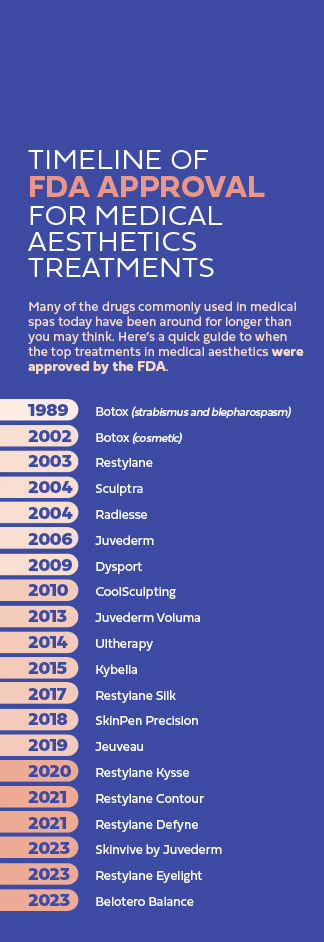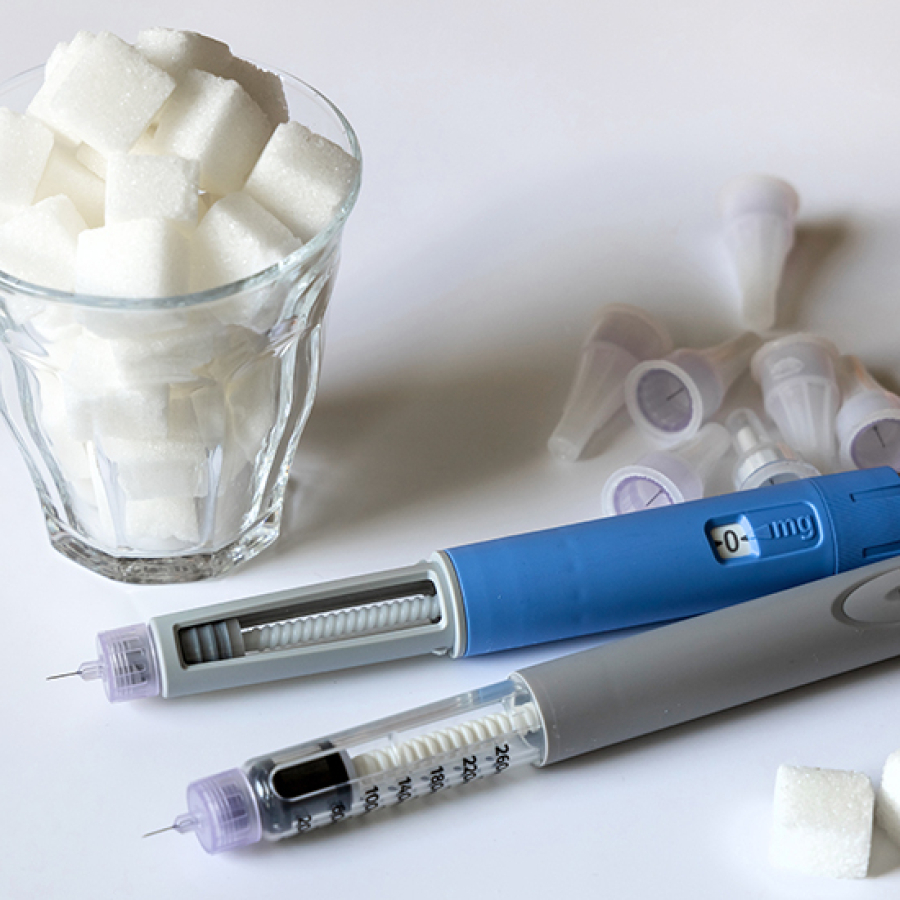
Legal
HB 3749, Greg Abbott, and... John Oliver?
HBO's Last Week Tonight with John Oliver discussed public concerns about how med spas operate.By Alex Thiersch, CEO, AmSpaJohn Oliver ...
Posted By Madilyn Moeller, Wednesday, May 29, 2024

By Michael Meyer
Despite the fact that it resembled the Wild West in terms of compliance and enforcement, the medical aesthetics industry was cooking by the late part of the ‘00s. However, the economic downturn known as the Great Recession, which took place from approximately 2007 to 2009, represented the industry’s greatest obstacle to date. But, instead of dealing medical spas a crippling blow, the recession helped to prove its resilience.
“We thought that it would take a hit on the aesthetic industry, and, in fact, it did the opposite, because there were many people who perhaps wanted to have a surgical procedure or facelift, but couldn’t come up with the money, and it was more affordable to get the injectables and lasers,” says Cirese. “So, even through that time, aesthetic medicine continued to grow.”
However, while the young industry did show great strength during this time, that doesn’t mean it wasn’t altered by the Great Recession. While smaller practices like the one Cirese worked at persevered, many of the large chains that had sprung up during the ‘00s found themselves in an impossible position.
“At that point, the industry was still heavily dominated by plastic surgeons and dermatologists, as well as a few places like Ideal Image and American Laser, which were large chains, and there were some other big laser hair removal groups that really were the ones ruling the industry,” Thiersch says. “Some of those were as much a real estate play as they were a medical spa. Those were the big kahunas when the economic downturn hit, and it took most of those players, unless they were really, really good—like, Ideal Image had their act together and they survived. Most of the rest of them went kaput almost overnight. And a lot of that was just because of their real estate holdings, and the fact that people stopped spending money immediately. That period of time was tough for everybody.”
The problem in the industry—and across society at large—was that there was no conception that something could go so catastrophically wrong, so people were not prepared. The lack of a long-term plan for many of the major players in medical aesthetics was reflected in the outcome.
“A lot of the players that had kind of emerged were extremely over-leveraged,” Thiersch says. “They did not take compliance seriously. There was no real plan for self-regulation. There was no plan for making the industry mainstream. It was just kind of like, here’s this new thing called laser hair removal and Botox and just go, go, go. A lot of those places went under, and it was a tough time for a lot of those folks.”

After the world emerged from the recession, medical aesthetics began the upward trajectory it continues to enjoy today. New treatments such as CoolSculpting (which was approved by the FDA in 2010), as well as new competitors for Botox and Restylane, were introduced and adopted by a newly emboldened industry. According to AmSpa’s 2022 Medical Spa State of the Industry Report, there were 1,600 medical spas in the U.S. in 2010; by 2015, this number had more than doubled to 3,625.
“That’s when some of the current big players in the industry emerged—when you saw a lot of these really enduring brands start to stick,” says Thiersch. “They started to become, not just scrappy new brands, but rather legitimate, powerful, respected players in medical aesthetics. This all happened in the same short three- to four-year time period.”
During this time, Thiersch’s experience with medical aesthetics and recognition that people within the industry needed someone looking out for them inspired him to create the American Med Spa Association.
“After attending a few conferences, I saw that the enforcement and the compliance angle was becoming a very, very big issue, even though it was still relatively unknown and under the surface,” he says. “A lot of folks I talked to even then had no idea what I was talking about when I said things like “good faith exam” or mentioned supervision. They had no clue there were even issues. But we had heard rumblings that people wanted to learn about it, and we started to take in information about the industry and compliance, and we start thinking, ‘Okay, this could be a really serious industry, and we need to take this seriously.’”
But Thiersch couldn’t have predicted the way that medical aesthetics evolved, with “core” practitioners, such as plastic surgeons and dermatologists, eventually taking a much smaller role than he expected.
“I had thought, mistakenly, that a lot of this was going to evolve in concert with plastic surgery, and it was all going to be under the rubric of plastic surgery,” he says. “But then, at some point, I realized after going to some conferences and then talking with other AmSpa employees, I realized that, no, there was an undercurrent that was taking the industry with it, and very soon, it was going to be an industry unto itself. It was going to leave plastic surgery and derms far behind—not behind by just a little bit, but far behind. That was when we made that conscious effort that we are only going do medical spas and concentrate on non-core owners, like NPs, PAs and RNs.”
In 2018, AmSpa introduced the Medical Spa Show, the first dedicated medical aesthetics conference and exposition that catered predominantly to non-physician owners and practitioners.
“That’s when AmSpa took off,” says Thiersch. “It was that effort to focus on the non-core physicians that really defined us. Many medical spas were operating independently from the core physicians, and the rest is history from there.”
In 2019, there were more than 6,500 medical aesthetics practices in the U.S., according to the 2022 Medical Spa State of the Industry Report. But then, the world changed, and medical spas were forced to change along with it.
In late 2019 and early 2020, word of a dangerous disease known colloquially as “the coronavirus” began to make the rounds. By March 2020, it was all over the United States, and businesses, including medical aesthetics practices, were forced to shut down in order to combat the spread of the disease. This caused huge financial problems that caused many medical spas to close permanently.
“We closed our doors, crying, and wondering when we would open again,” says Cirese. “In the meantime, we were just online all the time getting information. AmSpa put up a great webinar about creating a website with marketing and online shopping, and how to do social media for selling your skin care products. So, my daughter created a store on our website, and we just started doing that type of thing to create some income.”
Cirese’s medical spa survived the pandemic, but not everyone’s did, and those whose medical spas made it through struggled for a time. According to the 2022 Medical Spa State of the Industry Report, the year-over-year industry revenue percentage growth rate declined by 26% in 2020, but the industry bounced back in a big way in 2021, increasing by a rate of 69.5%. Since then, the industry has stabilized—people aren’t quite as anxious to get their treatments as they were in late 2020 and 2021, but business continues to grow at a steady rate.
Today, the industry is as big as it’s ever been, but there is an issue that will likely dictate its future more than any other: compliance. As medical aesthetics strives for mainstream acceptance, its safety is going to come under even greater scrutiny than before, and patient misfortunes are the sort of sensationalistic stories that news outlets can’t wait to cover and potential patients may very well read about.
“There’s got to be some regulation,” says Cirese. “It’s going to come down to that because adverse events can harm a person forever. You can blind somebody. You can cause physical problems. So, I think the opportunity to continue to educate is definitely one of my passions because we’ve got to keep the science and keep the professionalism in medical aesthetics.”
Thiersch sees some progress being made by professionals in the industry by adopting a mindset that includes compliance and is pleased that AmSpa played a role in making that true. However, he recognizes that the industry’s recent trend toward consolidation makes it even more vital than ever before.
“Even though we’ve been preaching that this is going to happen, and with all the consolidation that’s happening, people need to think about it,” Thiersch says. “It’s still a relatively recent phenomenon that people worry as much about compliance as they seem to be doing now, and now I think it’s kind of a different world where compliance is one of the first things that people think about. Now, with that said, we still find many, many, many people who have no idea what they’re doing, and it just shows you how long of a way there is to go in order to make this a regulated, consistent industry.”
However, some people have a somewhat more pessimistic view of the state of medical aesthetics today, although they do believe it is heading in the right direction.
“To be quite honest, I don’t think people are complying,” Wojak says. “I mean, I feel like there The History of Medical Aesthetics are a little more now, but it’s taken a while to get there. I honestly think AmSpa did make a change in that—they did make a move. People respect AmSpa and know of them, and since they can learn from them and they know what to do, they’re becoming better at it. Hopefully what we see is people being more compliant and taking their education seriously.”
And as the veterans of the industry pass it on to the newer generations, they hope to instill the view that there is still so much to learn.
“I think back to Botox, for example, because that was the first FDA-approved—we were administering 20 units to the glabella, but yet we wanted to use it in the forehead and the lateral canthal lines—the crow’s feet,” says Cirese. “So, learned by trial and error. We taught each other when we were at conferences. We formed a network of what we call our O.G.s. They’re aesthetic providers around the country, and we still meet and teach and share. So much of my mission for teaching is because we’ve learned so much over the years, let’s just pass this on. It’s our duty—our legacy—to pass on this knowledge and information and education. I continue to learn too, though. It’s an evolving educational field because of new techniques and new technology, and it’s harder for a new person coming into the field now because, back then, we had one Botox and one filler.”
Missed Part I? Read it on the AmSpa blog >>
AmSpa Members receive QP every quarter. Learn how to become a member and grow your aesthetic practice with the knowledge and community of these and other experts of the profession.
Related Tags
Medical spa news, blogs and updates sent directly to your inbox.

Legal
HBO's Last Week Tonight with John Oliver discussed public concerns about how med spas operate.By Alex Thiersch, CEO, AmSpaJohn Oliver ...

Trends
By Patrick O'Brien, JD, general counsel, and Kirstie Jackson, director of education, American Med Spa AssociationWhat is happening with glucagon-like ...

Trends
By Michael Meyer Approximately every two years, the American Med Spa Association (AmSpa) releases its Medical Spa State of ...

Trends
By Michael Meyer Since the beginning of 2024, it seems like medical aesthetics has taken one hit after another ...